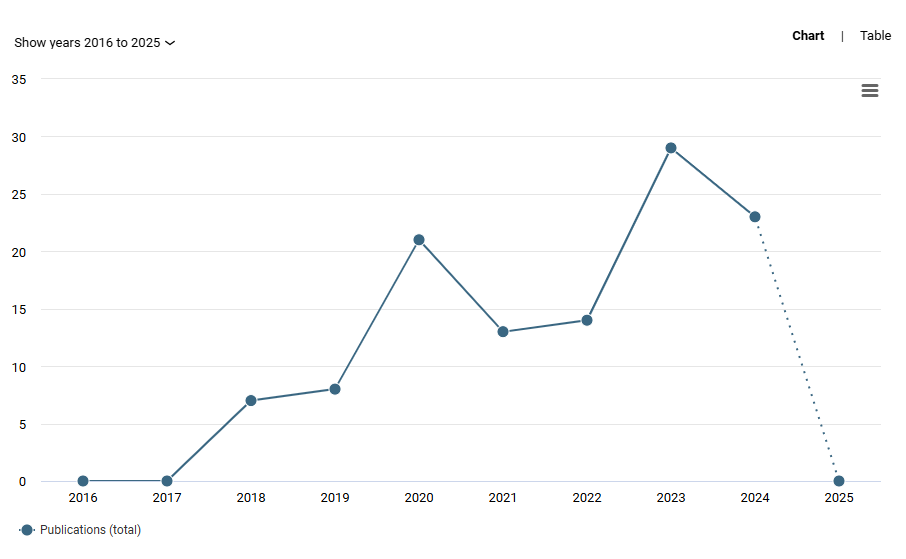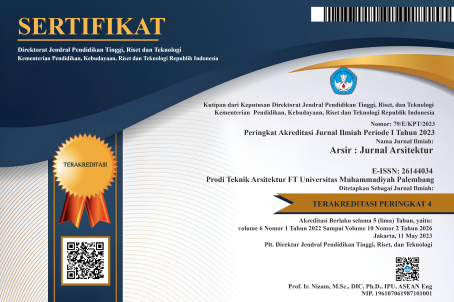Study of the Spatial Atmosphere of Nur Andakara Mosque based on Building Performance
DOI:
https://doi.org/10.32502/arsir.v10i1.680Keywords:
atmospheric characters, building performance, mosque design, spatial atmosphereAbstract
The spatial atmosphere in the architectural realm is defined by Gernot Böhme as the quality perceived by the user of the space through sensory experience. This sensory experience serves as an indicator of the success of architectural design. However, the theory provided still needs to be studied through more empirical architectural planning cases. Through the evaluation of the performance of the Nur Andakara Mosque building, this study focuses on understanding the variables that form the atmosphere and its generators in the three atmospheric characters proposed by Böhme: impression of motion, synaesthesia, and social character. The relationship between the elements that form the space and the atmosphere that appears is studied to provide a complete picture of the performance of a building built with a certain design intensity. The results of this study identify the elements of the building planned into the three characters, along with their impact on the quality of the design, in terms of the impression of motion formed by the accessibility elements in the building. The use of materials and thermal control operations becomes synaesthetic characters. Processing the shape of both the exterior and interior into social characters. The results of this study contribute to the design strategy in similar design cases, enabling them to achieve the quality of the spatial atmosphere.
Downloads
Published
How to Cite
Issue
Section
License
Copyright (c) 2025 Faiz Suprahman

This work is licensed under a Creative Commons Attribution-ShareAlike 4.0 International License.
Arsir: Jurnal Arsitektur (AJA) have CC-BY-SA or an equivalent license as the optimal license for the publication, distribution, use, and reuse of scholarly work.
Authors who publish Arsir: Jurnal Arsitektur (AJA) agree to the following terms: Authors retain copyright and grant the Arsir: Jurnal Arsitektur (AJA) right of first publication with the work simultaneously licensed under a Creative Commons Attribution License (CC BY-SA 4.0) that allows others to share (copy and redistribute the material in any medium or format) and adapt (remix, transform, and build upon the material) the work for any purpose, even commercially, with an acknowledgement of the work's authorship and initial publication in Arsir: Jurnal Arsitektur (AJA). Authors are able to enter into separate, additional contractual arrangements for the non-exclusive distribution of the journal's published version of the work (e.g., post it to an institutional repository or publish it in a book), with an acknowledgement of its initial publication in Arsir: Jurnal Arsitektur (AJA). Authors are permitted and encouraged to post their work online (e.g., in institutional repositories or on their website) prior to and during the submission process, as it can lead to productive exchanges as well as earlier and greater citation of published work (see The Effect of Open Access).
![]()
Work is distributed below This work is licensed under a Creative Commons Attribution-ShareAlike 4.0 International License.










